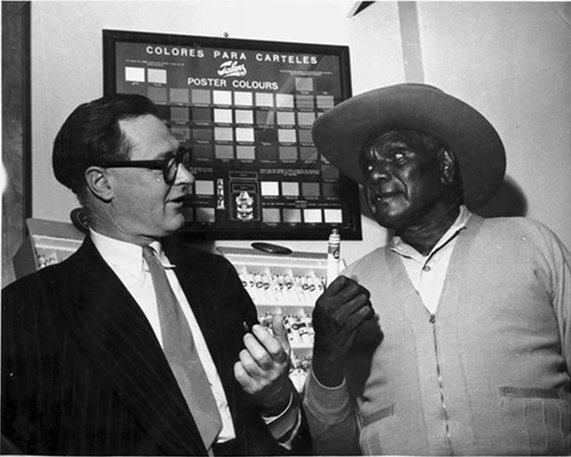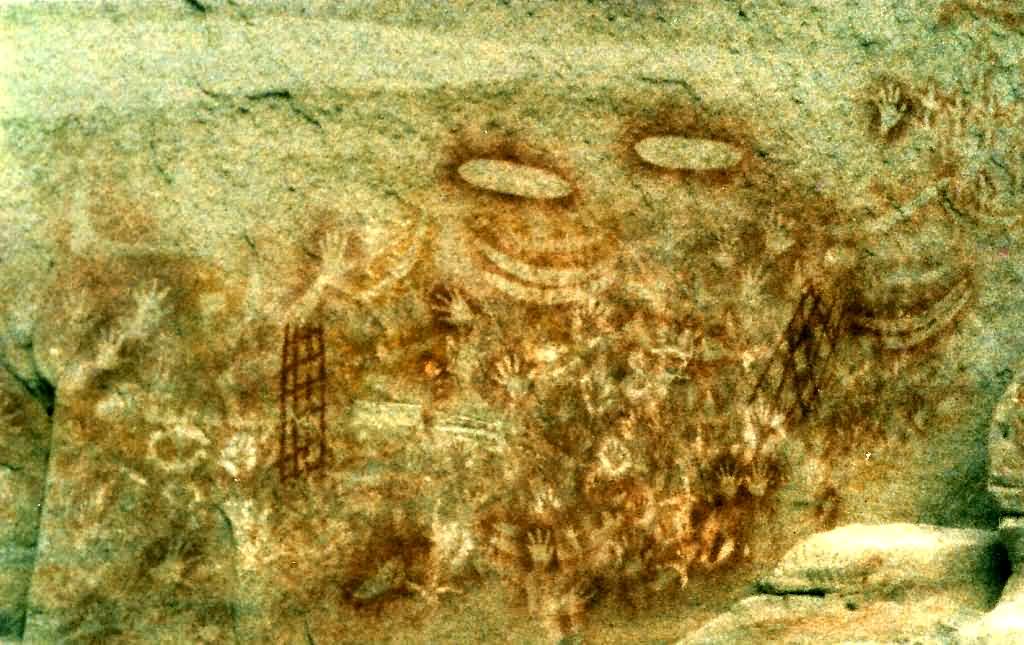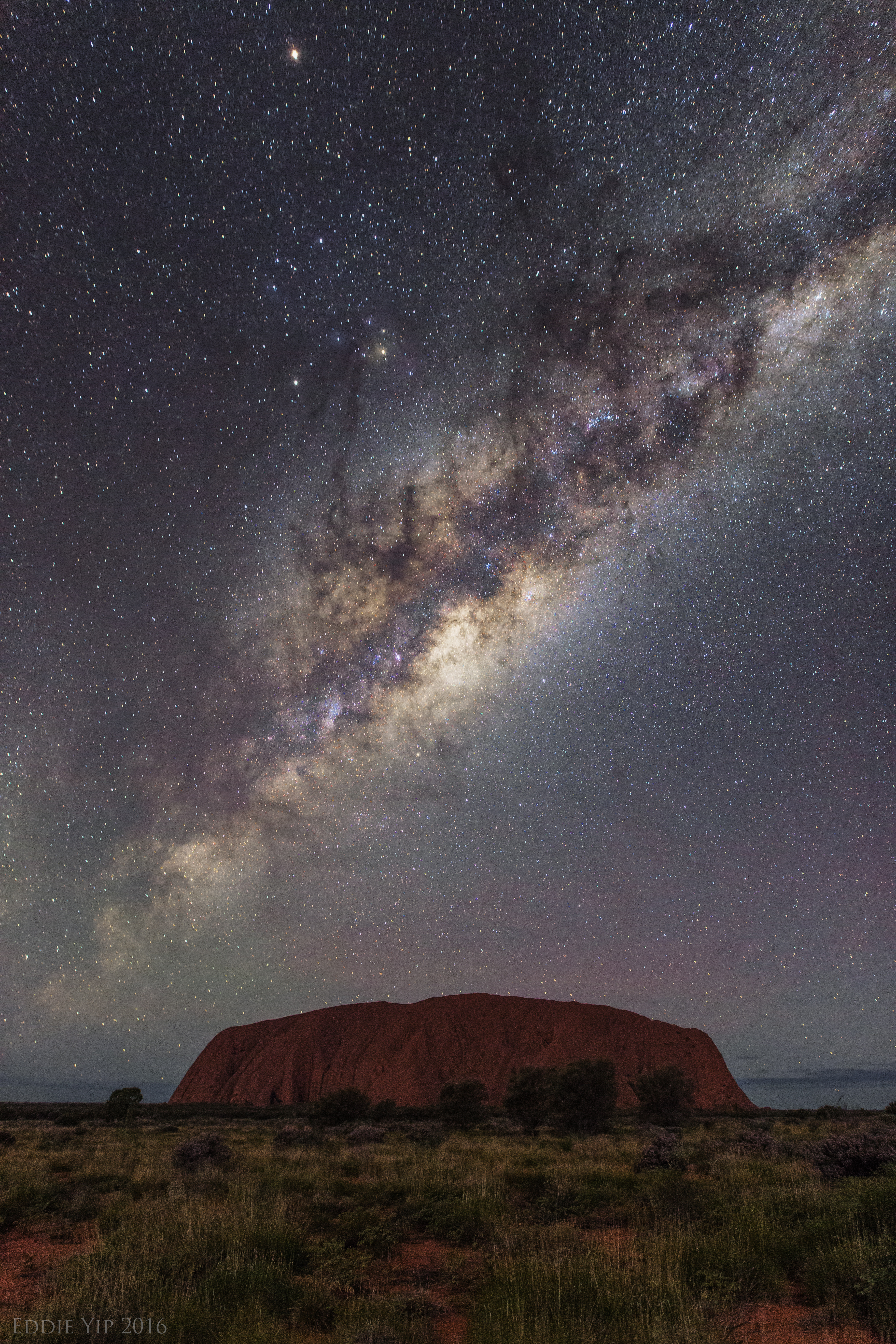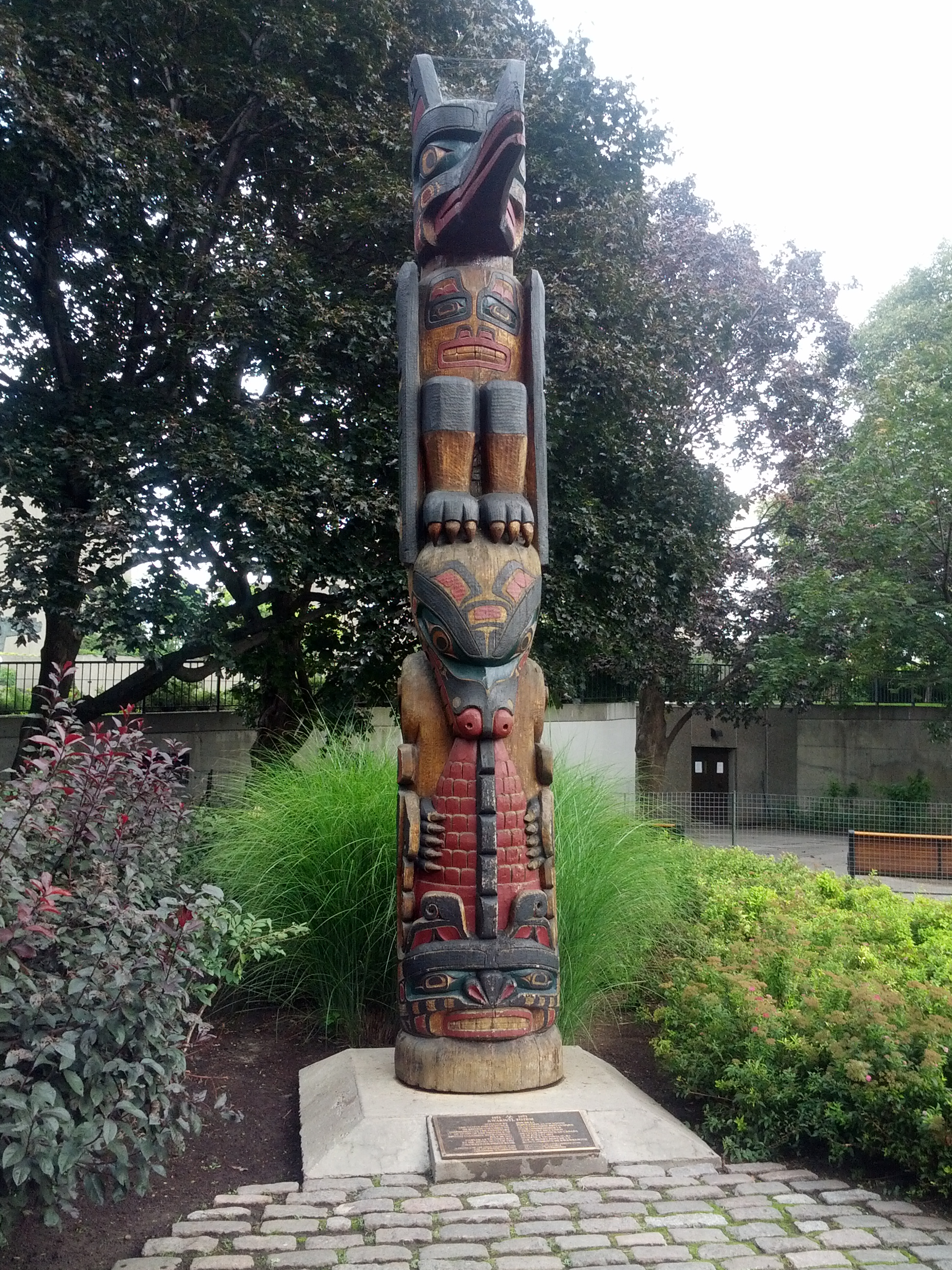|
Papunya Tula
Papunya Tula, registered as Papunya Tula Artists Pty Ltd, is an artist cooperative formed in 1972 in Papunya, Northern Territory, owned and operated by Aboriginal people from the Western Desert of Australia. The group is known for its innovative work with the Western Desert Art Movement, popularly referred to as dot painting. Credited with bringing contemporary Aboriginal art to world attention, its artists inspired many other Australian Aboriginal artists and their styles. The company operates today out of Alice Springs and its artists are drawn from a large area, extending into Western Australia, west of Alice Springs. Background In the late 1960s, the Australian Government moved several different groups living in the Western Desert region to Papunya, north-west of Alice Springs in the Northern Territory, to remove them from cattle lands and assimilate them into western culture. These displaced groups were primarily Pintupi, Luritja, Walpiri, Arrernte, and Anmatyerre gr ... [...More Info...] [...Related Items...] OR: [Wikipedia] [Google] [Baidu] |
Artist Cooperative
An artist cooperative (also co-operative or co-op) is an autonomous visual arts organization, enterprise, or association jointly owned and democratically controlled by its members. Artist cooperatives are legal entities organized as non-capital stock corporations, non-profit organizations, or unincorporated associations. Such cooperatives typically provide professional facilities and services for its artist-members, including studios, workshops, equipment, exhibition galleries, and educational resources. By design, all economic and non-economic benefits and liabilities of the cooperative are shared equally among its members. Cooperative members elect their board of directors from within the membership. . See also *[...More Info...] [...Related Items...] OR: [Wikipedia] [Google] [Baidu] |
Aboriginal Australian Ceremony
Australian Aboriginal culture includes a number of practices and ceremonies centered on a belief in the Dreamtime and other mythology. Reverence and respect for the land and oral traditions are emphasised. The words "law" and "lore", the latter relating to the customs and stories passed down through the generations, are commonly used interchangeably. Learned from childhood, lore dictates the rules on how to interact with the land, kinship and community. Over 300 languages and other groupings have developed a wide range of individual cultures. Aboriginal art has existed for thousands of years and ranges from ancient rock art to modern watercolour landscapes. Traditional Aboriginal music developed a number of unique instruments, and contemporary Aboriginal music spans many genres. Aboriginal peoples did not develop a system of writing before colonisation, but there was a huge variety of languages, including sign languages. Oral tradition Cultural traditions and beliefs as w ... [...More Info...] [...Related Items...] OR: [Wikipedia] [Google] [Baidu] |
Pansy Napangardi
Pansy Napangardi (born 1948) is an Australian artist. She is associated with the Jukurrpa group of women artists in Alice Springs where she lives today. Early life She was born at Haasts Bluff, Northern Territory, Australia. She remains one of the leading artists of Papunya Tula, after she was moved to the settlement of Papunya in the early 1960s after Haasts Bluff became abandoned due to lack of suitable water; it was here where she observed the work of many artists. Career Napangardi was the first professional female desert painter amidst the Luritija and Warlpiri people, learning techniques from the desert art founders. Learning from the renowned Indigenous Australian artists, Johny Warangula and Kaapa, she began to develop her own technique through the application of multi-coloured dots. Although she observed the men's painting business there, she is one of the rare women associated with Papunya Tula who did not serve an apprenticeship with the men. In 1983, Napangardi comm ... [...More Info...] [...Related Items...] OR: [Wikipedia] [Google] [Baidu] |
Contemporary Indigenous Australian Art
Contemporary Indigenous Australian art is the modern art work produced by Indigenous Australians, that is, Aboriginal Australians and Torres Strait Islander people. It is generally regarded as beginning in 1971 with a painting movement that started at Papunya, northwest of Alice Springs, Northern Territory, involving Aboriginal artists such as Clifford Possum Tjapaltjarri and Kaapa Tjampitjinpa, and facilitated by white Australian teacher and art worker Geoffrey Bardon. The movement spawned widespread interest across rural and remote Aboriginal Australia in creating art, while contemporary Indigenous art of a different nature also emerged in urban centres; together they have become central to Australian art. Indigenous art centres have fostered the emergence of the contemporary art movement, and as of 2010 were estimated to represent over 5000 artists, mostly in Australia's north and west. Contemporary Indigenous artists have won many of Australia's most prominent art prizes. ... [...More Info...] [...Related Items...] OR: [Wikipedia] [Google] [Baidu] |
Masonite
Masonite board Back side of a masonite board Isorel, Quartrboard, Masonite Corporation, Masonite, also called Quartboard or pressboard, is a type of engineered wood made of steam-cooked and pressure-molded wood or paper fibers. The fibers form a stiff, dense material in a range of weights. The process was formulated and patented by American inventor William H. Mason. Masonite has been widely used in traditional school and office products such as spiral-bound notebooks and three-ring binders, but its unique physical characteristics lend themselves readily to a variety of end-uses, including (but not limited to) document storage, filing supplies (classification and file folders), report covers, folding cartons, tags, labels, and industrial applications. History In 1898, a product resembling Masonite ( hardboard) was first made in England by hot-pressing waste paper.Akers, 1966, p. x In 1924, Masonite was patented in Laurel, Mississippi, by William H. Mason, who was a ... [...More Info...] [...Related Items...] OR: [Wikipedia] [Google] [Baidu] |
Jukurrpa
The Dreaming, also referred to as Dreamtime, is a term devised by early anthropologists to refer to a religio-cultural worldview attributed to Australian Aboriginal mythology. It was originally used by Francis Gillen, quickly adopted by his colleague Walter Baldwin Spencer, and thereafter popularised by A. P. Elkin, who later revised his views. The Dreaming is used to represent Aboriginal concepts of "Everywhen", during which the land was inhabited by ancestral figures, often of heroic proportions or with supernatural abilities. The term is based on a rendition of the Arandic word , used by the Aranda (Arunta, Arrernte) people of Central Australia, although it has been argued that it is based on a misunderstanding or mistranslation. Some scholars suggest that the word's meaning is closer to " eternal, uncreated". Anthropologist William Stanner said that the concept was best understood by non-Aboriginal people as "a complex of meanings". ''Jukurrpa'' is a widespread term ... [...More Info...] [...Related Items...] OR: [Wikipedia] [Google] [Baidu] |
Songlines
A songline, also called dreaming track, is one of the paths across the land (or sometimes the sky) within the animist belief systems of the Aboriginal cultures of Australia. They mark the route followed by localised "creator-beings" in the Dreaming. These routes serve as crucial connections between individuals and their ancestral lands, carrying intricate geographical, mythological, and cultural information. At its core, a songline functions as both a navigational aid and a repository of cultural knowledge. Embedded within traditional song cycles, dance rituals, stories, and artistic expressions, these pathways enable individuals to traverse vast distances while reciting the songs that describe landmarks, water sources, and natural features. Notably, the melodic contours and rhythmic nuances of the songs transcend linguistic barriers, facilitating cross-cultural understanding as different language groups interact and share the essence of these ancient narratives. A unique fac ... [...More Info...] [...Related Items...] OR: [Wikipedia] [Google] [Baidu] |
Honeypot Ant
Honeypot ants, also called honey ants, are ants which have specialized workers—repletes, plerergates or rotunds—that consume large amounts of food to the point that their abdomens swell enormously. This phenomenon of extreme inflation of the trunk is called physogastry. Other ants then extract nourishment from them, through the process of trophallaxis. They function as living larders. Honeypot ants belong to any of several genera, including '' Myrmecocystus'' and ''Camponotus''. They were first documented in 1881 by Henry C. McCook, and described further in 1908 by William Morton Wheeler. Behaviour Many insects, notably honey bees and some wasps, collect and store liquid for use at a later date. However, these insects store their food within their nest or in combs. Honey ants are unique in using their own bodies as living storage, used later by their fellow ants when food is otherwise scarce. Designated worker ants called "repletes" are the main group that store food for th ... [...More Info...] [...Related Items...] OR: [Wikipedia] [Google] [Baidu] |
Aboriginal Elder
Australian Aboriginal elders are highly respected people within Australia and their respective Aboriginal and Torres Strait Islander communities. An elder has been defined as "someone who has gained recognition as a custodian of knowledge and lore, and who has permission to disclose knowledge and beliefs". They may be male or female, and of any age, but must be trusted and respected by their community for their wisdom, cultural knowledge and community service. Elders provide support for their communities in the form of guidance, counselling and knowledge, which help tackle problems of health, education, unemployment and racism, particularly for younger people. They may be distinguished as one of two types: community elders and traditional elders. Elders play an important role in maintenance of culture, songs, oral histories, sacred stories, Aboriginal Australian languages, and dance, and are also educators who demonstrate leadership and skills in resolving conflicts. Elders als ... [...More Info...] [...Related Items...] OR: [Wikipedia] [Google] [Baidu] |
Creation Stories
A creation myth or cosmogonic myth is a type of cosmogony, a symbolic narrative of how the world began and how people first came to inhabit it., "Creation myths are symbolic stories describing how the universe and its inhabitants came to be. Creation myths develop through oral traditions and therefore typically have multiple versions." While in popular usage the term ''myth'' often refers to false or fanciful stories, members of cultures often ascribe varying degrees of truth to their creation myths. In the society in which it is told, a creation myth is usually regarded as conveying profound truthsmetaphorically, symbolically, historically, or literally. They are commonly, although not always, considered cosmogonical mythsthat is, they describe the ordering of the cosmos from a state of chaos or amorphousness. Creation myths often share several features. They often are considered sacred accounts and can be found in nearly all known religious traditions. They are all storie ... [...More Info...] [...Related Items...] OR: [Wikipedia] [Google] [Baidu] |
Dreamtime (mythology)
The Dreaming, also referred to as Dreamtime, is a term devised by early anthropologists to refer to a religio-cultural worldview attributed to Australian Aboriginal mythology. It was originally used by Francis Gillen, quickly adopted by his colleague Walter Baldwin Spencer, and thereafter popularised by A. P. Elkin, who later revised his views. The Dreaming is used to represent Aboriginal concepts of "Everywhen", during which the land was inhabited by ancestral figures, often of heroic proportions or with supernatural abilities. The term is based on a rendition of the Arandic word , used by the Aranda (Arunta, Arrernte) people of Central Australia, although it has been argued that it is based on a misunderstanding or mistranslation. Some scholars suggest that the word's meaning is closer to " eternal, uncreated". Anthropologist William Stanner said that the concept was best understood by non-Aboriginal people as "a complex of meanings". ''Jukurrpa'' is a widespread term ... [...More Info...] [...Related Items...] OR: [Wikipedia] [Google] [Baidu] |
Totems
A totem (from or ''doodem'') is a spirit being, sacred object, or symbol that serves as an emblem of a group of people, such as a family, clan, lineage, or tribe, such as in the Anishinaabe clan system. While the word ''totem'' itself is an anglicisation of the Ojibwe term (and both the word and beliefs associated with it are part of the Ojibwe language and culture), belief in tutelary spirits and deities is not limited to the Ojibwe people. Similar concepts, under differing names and with variations in beliefs and practices, may be found in a number of cultures worldwide. The term has also been adopted, and at times redefined, by anthropologists and philosophers of different cultures. Contemporary neoshamanic, New Age, and mythopoetic men's movements not otherwise involved in the practice of a traditional, tribal religion have been known to use "totem" terminology for the personal identification with a tutelary spirit or spirit guide. Ojibwe ''doodemen'' The Anishinaab ... [...More Info...] [...Related Items...] OR: [Wikipedia] [Google] [Baidu] |






